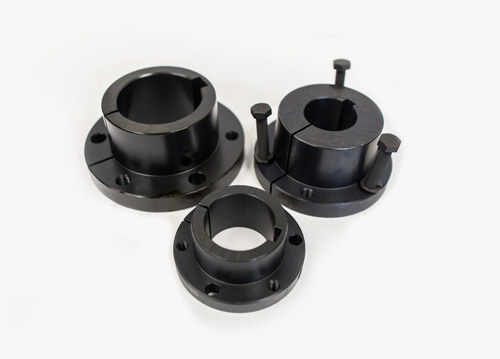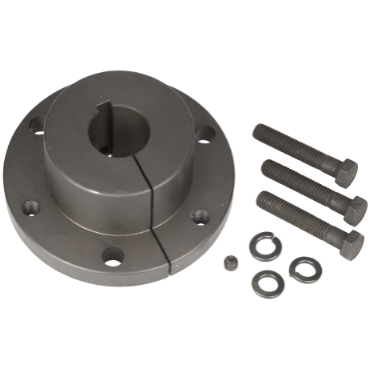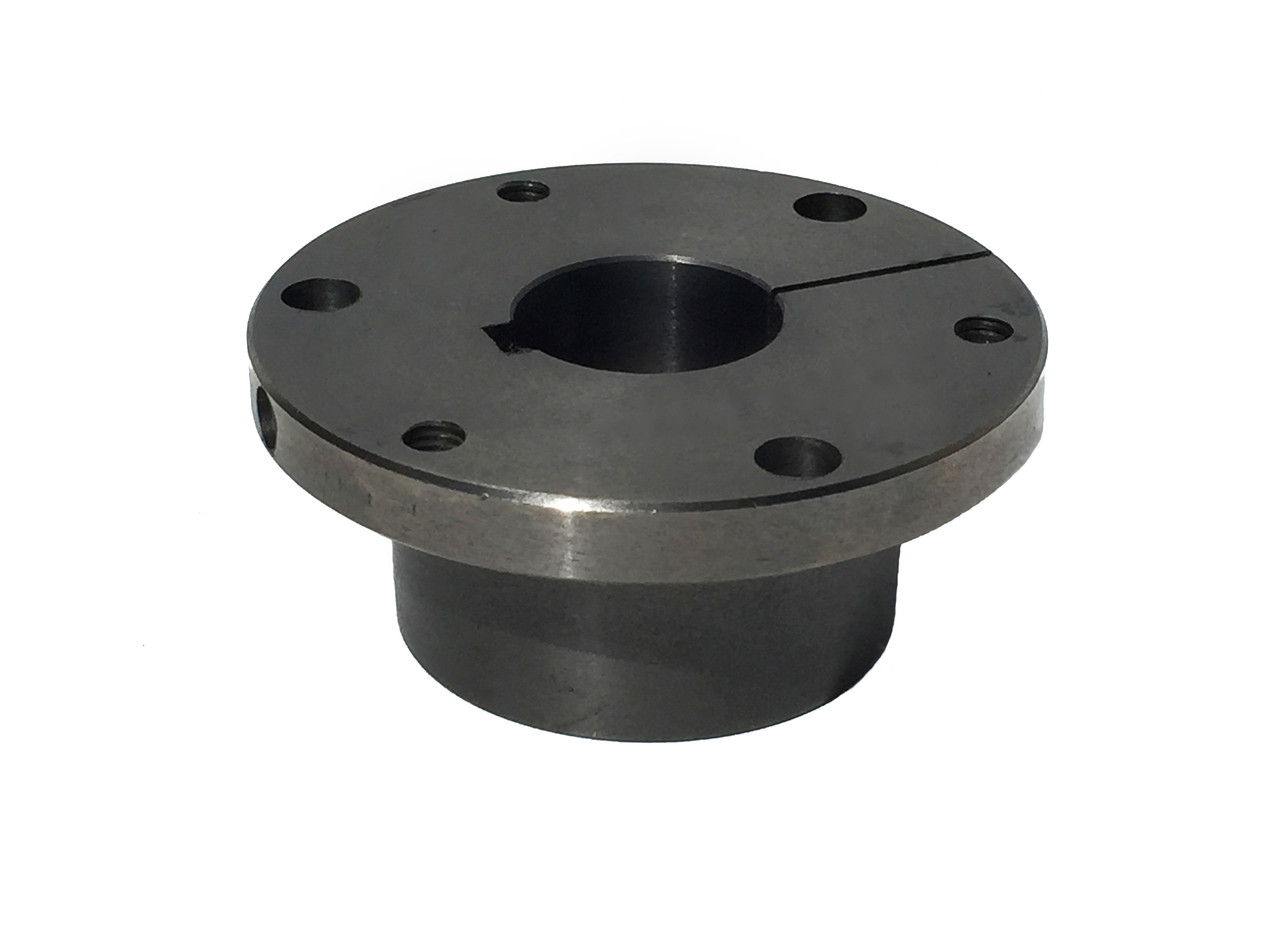
What are the temperature and environmental considerations when using QD bushings?
When using QD (Quick Disconnect) bushings, it is important to take into account temperature and environmental factors to ensure their optimal performance and longevity. Here are some key considerations regarding temperature and environmental conditions:
- Temperature Range: QD bushings are typically designed to operate within specific temperature ranges. It is crucial to understand the temperature limits specified by the manufacturer for the particular type and material of the bushing. Exceeding these temperature limits can lead to premature wear, reduced load capacity, dimensional changes, or even failure of the bushing. Extreme heat or cold can affect the material properties, lubrication, and overall functionality of the bushing.
- Operating Environment: The operating environment plays a significant role in determining the performance and durability of QD bushings. Factors such as moisture, humidity, dust, chemicals, and corrosive substances can impact the bushing’s performance and lifespan. In corrosive environments, it is essential to select bushings made from materials that offer resistance to corrosion or consider additional protective measures such as coatings or seals. Similarly, in dusty or dirty environments, regular cleaning and maintenance are necessary to prevent contaminants from impairing the bushing’s operation.
- Lubrication: Proper lubrication is critical for the smooth operation and longevity of QD bushings. The selection of lubricant should take into account the anticipated temperature range, operating conditions, and the manufacturer’s recommendations. Lubrication helps reduce friction, wear, and heat generation within the bushing, ensuring efficient power transmission and preventing premature failure. Regular lubrication maintenance should be carried out as per the manufacturer’s guidelines.
- Load and Speed: The temperature of QD bushings can be influenced by the magnitude of the applied load and the rotational speed. Higher loads and speeds generate more heat, which can impact the temperature of the bushing and its surrounding components. It is important to consider these factors and select QD bushings that are capable of handling the anticipated loads and speeds within the specified temperature range.
- Vibration and Shock: Excessive vibration and shock can affect the performance and reliability of QD bushings. Vibrations can cause fretting, loosening, or misalignment of the bushing, leading to increased wear and reduced service life. If the application involves significant vibration or shock loads, it is important to select QD bushings that are designed to withstand such conditions or consider additional measures such as using locking compounds or supplementary fasteners to enhance the bushing’s stability.
It is crucial to consult the manufacturer’s documentation, guidelines, and specifications for the specific QD bushings you are using. They will provide detailed information on temperature limits, environmental considerations, and any particular requirements or recommendations for the bushing’s operation and maintenance.
By considering temperature and environmental factors, selecting appropriate materials, ensuring proper lubrication, and addressing specific application requirements, you can maximize the performance and lifespan of QD bushings in your mechanical systems, contributing to their overall reliability and efficiency.

Can I get advice on selecting the right QD bushings based on torque, speed, and load requirements?
When selecting the right QD (Quick Disconnect) bushings based on torque, speed, and load requirements, it is crucial to consider several factors to ensure optimal performance and compatibility. Here is some advice to guide you in the selection process:
- Torque Capacity: Determine the maximum torque that will be transmitted through the QD bushing in your application. This can be influenced by factors such as the power source, driven component, and operating conditions. Check the manufacturer’s specifications for the QD bushing’s torque capacity rating. It is important to choose a QD bushing that can handle the anticipated torque without exceeding its limits to ensure reliable and safe operation.
- Speed Limitations: Consider the rotational speed or RPM (revolutions per minute) at which the QD bushing will operate. Higher speeds can generate centrifugal forces, which can affect the performance and stability of the bushing. Verify the manufacturer’s specifications for the maximum recommended speed rating of the QD bushing. Ensure that the selected bushing can handle the anticipated speed without compromising its integrity or causing excessive wear.
- Load Requirements: Evaluate the applied load on the QD bushing, including axial, radial, and moment loads. Consider factors such as the weight of the driven component, dynamic forces, and any external forces acting on the system. Check the manufacturer’s specifications for the load capacity ratings of the QD bushing. It is essential to select a bushing that can withstand the anticipated loads without experiencing excessive deformation or failure.
- Material Selection: QD bushings are available in various materials, such as steel, stainless steel, and cast iron. Consider the environmental conditions, temperature range, and potential exposure to corrosive substances or contaminants in your application. Choose a QD bushing material that offers the necessary strength, corrosion resistance, and durability for the specific operating conditions.
- Consult with Manufacturers and Engineers: If you have specific and complex requirements or are unsure about the selection process, it is advisable to consult with QD bushing manufacturers or experienced engineers. They can provide expert guidance based on their knowledge and experience. Sharing comprehensive information about your application, including torque, speed, load requirements, and other relevant factors, will help them recommend the most suitable QD bushing for your needs.
It is crucial to note that selecting the right QD bushings goes beyond torque, speed, and load requirements. Other factors, such as shaft diameter, shaft fit, axial positioning requirements, and compatibility with the driven component, also play a significant role. Always refer to the manufacturer’s specifications, guidelines, and recommendations to ensure proper selection and installation of the QD bushings in your power transmission or conveying system.
By considering these factors and seeking professional advice when needed, you can make informed decisions and choose the right QD bushings that meet your torque, speed, and load requirements, leading to optimal performance and longevity of your system.

Where can I find information on the key dimensions of QD bushings for proper compatibility?
Obtaining accurate information on the key dimensions of QD (Quick Disconnect) bushings is crucial for ensuring proper compatibility with shafts and mounted components. Here are some reliable sources where you can find information on the key dimensions of QD bushings:
- Manufacturer’s Catalogs and Websites: Most QD bushing manufacturers provide detailed product catalogs and specifications on their websites. These resources typically include comprehensive information on the dimensions, sizes, and tolerances of their QD bushing offerings. Manufacturer catalogs often contain technical drawings, diagrams, and tables that specify the key dimensions of the bushings. These catalogs can be accessed online or requested directly from the manufacturer.
- Engineering and Industrial Supply Websites: Engineering and industrial supply websites often offer product listings and information for various QD bushing manufacturers. These websites may provide detailed product descriptions, including key dimensions, along with technical specifications. It’s advisable to search for reputable websites that specialize in industrial components and have a wide range of QD bushing options available.
- Technical Support from Manufacturers: If you require specific information or have questions about the key dimensions of QD bushings, contacting the manufacturer’s technical support team can be beneficial. Manufacturers often have dedicated support personnel who can assist you in selecting the appropriate bushing based on your requirements. They can provide guidance on the key dimensions and compatibility considerations, ensuring that you choose the right QD bushing for your application.
- Engineering Handbooks and Reference Materials: Engineering handbooks and reference materials related to power transmission, mechanical components, or industrial equipment may contain general information on QD bushings, including key dimensions. These resources can provide a broader understanding of QD bushings and their compatibility considerations. Libraries, technical bookstores, or online platforms that offer engineering references are good places to look for such materials.
When accessing information on the key dimensions of QD bushings, it is important to consider the specific requirements of your application, such as shaft diameter, torque capacity, and load ratings. Ensure that the dimensions provided by the manufacturer align with your needs and conform to industry standards. If you have any doubts or need further clarification, consulting with an experienced engineer or contacting the manufacturer directly is recommended.
By utilizing these sources, you can access reliable information on the key dimensions of QD bushings, enabling you to make informed decisions and ensure proper compatibility in your mechanical setups.


editor by CX 2023-12-26